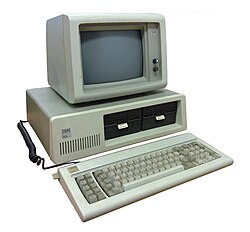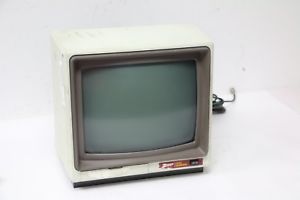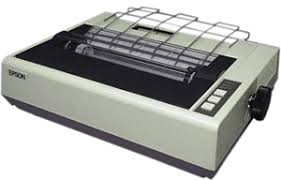Difference between revisions of "IBM PC 5150"
(Corrected the RAM spec and monitor model.) |
|||
| (5 intermediate revisions by the same user not shown) | |||
| Line 3: | Line 3: | ||
| name = IBM PC 5150 | | name = IBM PC 5150 | ||
| image = Ibm pc 5150.jpg | | image = Ibm pc 5150.jpg | ||
| caption = IBM PC 5150 | |||
| vendor = IBM | | vendor = IBM | ||
| model = Personal Computer 5150 | | model = Personal Computer 5150 | ||
| Line 20: | Line 21: | ||
== Summary == | == Summary == | ||
This was my first computer. My father (who was legally blind) received it from the Division for Vocational Rehabilitation and used it to write his book. | This was my first computer. My father (who was legally blind) received it from the Division for Vocational Rehabilitation and used it to write his book. For my father, this computer replaced an orange IBM Selectric II or III (not sure which). | ||
== Detailed Specifications == | |||
=== Original === | |||
* 4.77MHz AMD D8088 CPU | |||
* 256KB RAM | |||
* 2x 5.25" 360KB DSDD floppy drives | |||
* IBM CGA video card | |||
* Zenith Data Systems ZVM-123 monitor | |||
* Epson MX-80 printer | |||
=== First Upgrade === | |||
* 30MB Fujitsu MFM hard drive | |||
* 512KB RAM (on an ISA expansion card) | |||
The hard drive was partitioned into 4 partitions and loaded with a copy of Zenith DOS, where the partitions were managed by ASGNPART as follows: | |||
* Drive C (volume label SYS) had DOS, Norton Utilities, WordStar, and a few other programs loaded on it | |||
* Drive D (volume label DOCS) had my dad's book and other documents | |||
* Drive E (volume label unknown) had my mom's documents and Personal Ancestral File database | |||
* Drive F (volume label SCRATCH) was used for scratch space | |||
At some point, my dad upgraded the machine with a VGA video card and monitor, and the Epson MX-80 printer was replaced with an IBM ProPrinter X24. | |||
After I took over ownership of the machine in 1991, the VGA video card was replaced with an ATi Graphics Solution Plantronics-compatible video card and the ZVM-122 monitor was pressed back into service. The remaining original floppy drive failed and was replaced with a half-height 360KB DSDD floppy drive. At some point, I reinstalled IBM PC-DOS 3.21 on the hard drive, on a single 30MB partition. | |||
I used WordStar 6.0, BASICA, PC Globe, DEBUG.COM, the Cosmi Top Ten Solid Gold games collection, Where In The World Is Carmen San Diego?, and many other applications on this machine. I became a huge WordStar geek in this era, in spite of my dad's urging to follow him to that dark place where Word Perfect was taking over the world. At that point, my dad had acquired an NEC PowerMate SX Plus machine with a 16MHz 386SX CPU, and was heavily into flight simulators and beginning to poke around the edges of Windows 3.0. | |||
=== Later Solarridge Era === | |||
I stupidly pulled all the configuration jumpers off of the multi I/O card, rendering the machine non-functional for a time, as the jumpers were not documented on the card. A replacement I/O card was acquired from Edgar Digital and Electronics Surplus, and I installed MS-DOS 6.0 on it. | |||
Around the end of the Solarridge era, I acquired a 90MHz Pentium machine from Knapp Computer Systems, and the 5150 fell into disuse for a long period. | |||
=== Trailer Era === | |||
The machine was once again upgraded with a VGA video card, as the ZVM-122 had failed and was stored in my mom's garage. In this configuration, I used Microsoft BASCOM on the machine, as well as VBDOS. | |||
== Monitor == | == Monitor == | ||
When I had it, this machine had a Zenith Data Systems ZVM- | |||
=== Zenith Data Systems ZVM-123 === | |||
When I had it, this machine had a Zenith Data Systems ZVM-123 monitor, a green phosphor composite model. | |||
[[File:Zenith Data Systems ZVM-122.jpg|none|thumb|ZVM-122 Monitor]] | [[File:Zenith Data Systems ZVM-122.jpg|none|thumb|ZVM-122 Monitor]] | ||
| Line 30: | Line 71: | ||
== Printers == | == Printers == | ||
=== Epson MX-80 === | |||
This was the printer that came with the machine. | |||
[[File:Epson MX-80.jpg|none|thumb|Epson MX-80 Printer]] | [[File:Epson MX-80.jpg|none|thumb|Epson MX-80 Printer]] | ||
When I | === C. Itoh 8510 === | ||
When I first got the machine, there was no printer. [[Ron Garcia]] then donated a C. Itoh 8510. | |||
[[File:C.Itoh 8510.jpg|none|thumb|C. Itoh 8510 Printer]] | [[File:C.Itoh 8510.jpg|none|thumb|C. Itoh 8510 Printer]] | ||
Latest revision as of 17:04, 1 January 2020
This page is a stub. You can help by expanding it.
Summary
This was my first computer. My father (who was legally blind) received it from the Division for Vocational Rehabilitation and used it to write his book. For my father, this computer replaced an orange IBM Selectric II or III (not sure which).
Detailed Specifications
Original
- 4.77MHz AMD D8088 CPU
- 256KB RAM
- 2x 5.25" 360KB DSDD floppy drives
- IBM CGA video card
- Zenith Data Systems ZVM-123 monitor
- Epson MX-80 printer
First Upgrade
- 30MB Fujitsu MFM hard drive
- 512KB RAM (on an ISA expansion card)
The hard drive was partitioned into 4 partitions and loaded with a copy of Zenith DOS, where the partitions were managed by ASGNPART as follows:
- Drive C (volume label SYS) had DOS, Norton Utilities, WordStar, and a few other programs loaded on it
- Drive D (volume label DOCS) had my dad's book and other documents
- Drive E (volume label unknown) had my mom's documents and Personal Ancestral File database
- Drive F (volume label SCRATCH) was used for scratch space
At some point, my dad upgraded the machine with a VGA video card and monitor, and the Epson MX-80 printer was replaced with an IBM ProPrinter X24.
After I took over ownership of the machine in 1991, the VGA video card was replaced with an ATi Graphics Solution Plantronics-compatible video card and the ZVM-122 monitor was pressed back into service. The remaining original floppy drive failed and was replaced with a half-height 360KB DSDD floppy drive. At some point, I reinstalled IBM PC-DOS 3.21 on the hard drive, on a single 30MB partition.
I used WordStar 6.0, BASICA, PC Globe, DEBUG.COM, the Cosmi Top Ten Solid Gold games collection, Where In The World Is Carmen San Diego?, and many other applications on this machine. I became a huge WordStar geek in this era, in spite of my dad's urging to follow him to that dark place where Word Perfect was taking over the world. At that point, my dad had acquired an NEC PowerMate SX Plus machine with a 16MHz 386SX CPU, and was heavily into flight simulators and beginning to poke around the edges of Windows 3.0.
Later Solarridge Era
I stupidly pulled all the configuration jumpers off of the multi I/O card, rendering the machine non-functional for a time, as the jumpers were not documented on the card. A replacement I/O card was acquired from Edgar Digital and Electronics Surplus, and I installed MS-DOS 6.0 on it.
Around the end of the Solarridge era, I acquired a 90MHz Pentium machine from Knapp Computer Systems, and the 5150 fell into disuse for a long period.
Trailer Era
The machine was once again upgraded with a VGA video card, as the ZVM-122 had failed and was stored in my mom's garage. In this configuration, I used Microsoft BASCOM on the machine, as well as VBDOS.
Monitor
Zenith Data Systems ZVM-123
When I had it, this machine had a Zenith Data Systems ZVM-123 monitor, a green phosphor composite model.
Printers
Epson MX-80
This was the printer that came with the machine.
C. Itoh 8510
When I first got the machine, there was no printer. Ron Garcia then donated a C. Itoh 8510.
Historical Summary
Note that the information presented in this section was retrieved from my old personal website, The VAX Pirate's Lair, and is not likely to be entirely accurate or timely. Spelling errors have been kept intact for the purposes of historical preservation.
Note: I realize now that IBM regularly sourced processors from AMD for these machines, and so the system planar on this machine was actually original.
This is the granddaddy of the x86 architecture: an original IBM PC. The real thing. Purchased in 1984 as my family's first home computer, it was passed to me in 1991 when my father upgraded to a shiny new NEC 386. I remember this machine having two ful l-bay 5.25" DS/DD floppy drives and a green-on-black CGA monitor. It was upgraded in approximately 1986 with a 30MB Fuji (not Fujitsu) MFM hard drive. It still works like a charm, albeit very slowly. The hard drive is loud, the power supply squeaky, and t he processor, plodding along at a dismal 4.77MHz, is slow. But, this computer is a joy to play with and write BASIC programs on, and reminds us of a time when multitasking and graphical user interfaces were unheard of. This computer is running IBM PC-DOS 3.21, and has WordStar 3.3, WordStar 6.0, Norton Utilities 1.2, IBM BASIC compiler, and a games pak. At some point the motherboard was replaced because the processor is not an Intel. I think the original IBM PC motherboard could only accommodate 64KB RAM on the system board, and this one has support for (and is loaded with) 256K
- IBM Personal Computer (5150)
- Advanced Microdevices D8088 processor (not sure why or when this was put in)
- 512K RAM (256KB on the system board, 256KB on a memory expansion card)
- 30MB Fuji MFM hard drive
- ATi Small Wonder Graphics Solution video card (basically enhanced CGA)
- IBM PC-DOS 3.21



